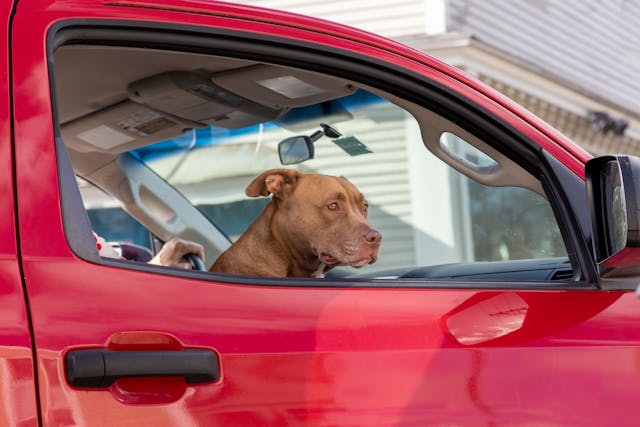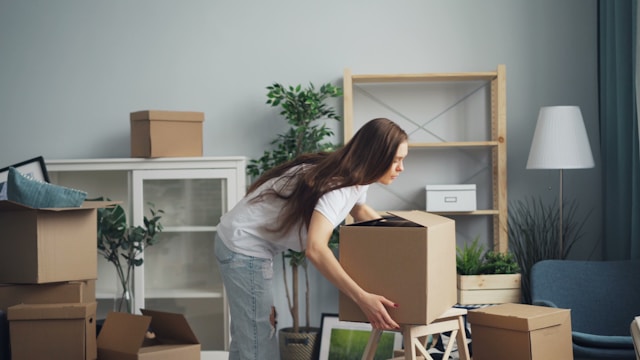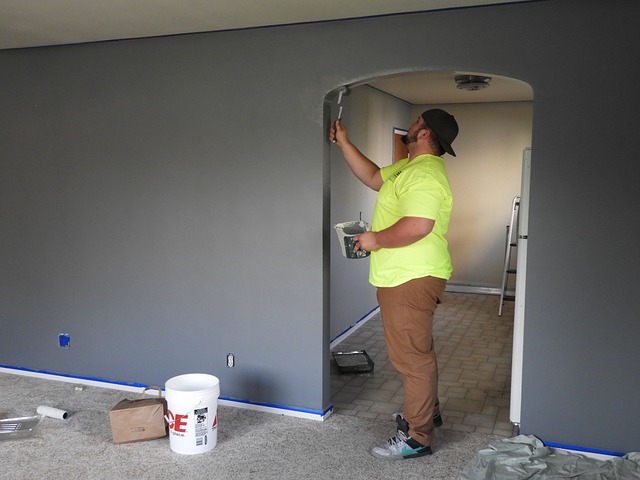This is a sponsored guest post.

Moving in with pets can be a difficult experience, but this is only the case if you are unprepared and do not plan ahead. To ensure you are able to adjust comfortably to your new home and easily move in, this guide will provide you with helpful tips.
If there are any local pet regulations you need to know of, or if there is any special routine you’ll need to follow in order to settle in, we’ll cover that too in this article.
So in case you’re wondering how to move with your pet and with little to no hassle, we’re here to help!
1. Pre-Move Preparations
When moving with pets, pre-preparing everything beforehand is vital as there are a lot of things that may go wrong. With that being said, let’s get started.
Gather Pet Supplies
Moving to a new home means getting your pets adapted to the new place, in order to make the transition as smooth as possible, you should get the following supplies:
- Food
- Water bowls
- Toys
- Favorite blankets
Some additional things you should pack as well include a suitable leash for the trip, as well as portable water and food containers. Furthermore, if your pet uses any medication or follows a specific diet, having such supplies at hand would be quite beneficial.
Basically, prepping accordingly will help you alleviate the stress and other issues associated with changing locations with your pet.
Be Familiar with Local Pet Regulations
If you are relocating to a different region, it’s important to find out about the local pet regulations and policies that exist there. Each region has its own rules as regards pet ownership such as leash laws, laws on vaccination, and even laws on which breeds to keep. Additionally, look into available services like day camp and overnight care, as options and requirements can vary widely depending on the area.
Inform the relevant authorities or let the residents know that you are abiding by these rules and that there won’t be any trouble with your pet in the new neighborhood. Contact your Northern Virginia rental manager if you have any pet-related questions before your moving-in day.
This proactive measure can help you and your pet in having an easy transition because you are both now well prepared.
2. Moving Day
This is the day of the move! With the following tips, we will ensure that your move goes smoothly without affecting your pet.
Travel Considerations for Your Pet
On a moving day, the priority for pet owners is making sure that their pet has a comfortable traveling experience. While driving, it is advisable to have the animal in a stout pet carrier or pet crate means they are secure which will heighten the pet’s security.
Contact your veterinarian to get some medication if your pet gets nauseous from the constant motion. During the drive make routine pauses so that your pet can ease itself, drink water, or even take short strolls.
As previously mentioned, ensure to pack items they are familiar with such as blankets and toys to make them feel secure and safe. These small things can make a difference in keeping your dog calm during the ride.
Create a Safe Space for Your Pet
As soon as you settle into your new house, it is important to prepare a safe place for your pet. Create a separate room where your pet can eventually overcome the nervousness caused by the new environment. Add their mattress, food, and water containers, toys, and a couple of items that they used in the previous place to this room.
This space will be a safe haven especially when you are busy unpacking and your pet starts becoming anxious due to all the movement around them. It is always better to keep the door shut to prevent them from getting scared or wandering.
Consider showing them each part of the house at different times so they can understand their surroundings and how to navigate them. This would ease the transition process for your pet.
After Moving Day
Congratulations on moving to a new place. Next in this process, we will take care of your pet and help them adapt and relax in their new surroundings.
Establish a Routine with Your Pet
Forging a new way of life requires you to incorporate strong habits for the pet so that they can easily adjust to the new lifestyle. Begin by establishing appropriate feeding hours, setting out for walks, and allotting time for play with your pet on the first day of its arrival at your home.
Pets take a while to settle into their new homes, and during such transitions, they look out for stability and comfort, which is assured to them by sticking to the routines. The ideal time is early when only exploring is involved. Give your pet a decent amount of attention until they’re settled in.
Monitor Your Pet’s Behavior
Once you settle into the new environment, start observing your pet for some time to assess whether they are anxious or stressed. It is only natural for pets to be slightly uncomfortable in a new location but keep an eye out for excessive licking, change in eating behavior, or abnormal habits.
If a particular behavior is observed, allow your pet time to breathe and calm them down by offering reassurance. Providing activities and having playtime reduces anxiety.
If the behavior continues, you may want to schedule an appointment with your vet for help on how your pet can adjust to the new surroundings.
Bonus: Tips for Introducing Pets to New Environments
Helping your pet get used to a new house should be a relatively easy job, considering the slow and positive steps involved.
Gradual Introduction
Start slowly by letting the pet out in one room at a time. Start with a small calm place so they can feel secure and then little by little help them adjust to other parts of the house. This is to help your pet not get bombarded with so much information in a short time.
Make sure there aren’t other disturbances that would stress the pet during this time. Once the pet feels stress-free, gradually let the pet have more room to wander in at its own pace.
Positive Reinforcement
Tasty pet treats should be used in a way to build a bond with the new environment. Whenever the pet goes to a new room or is calm and behaving well, give them their favorite treats or praise them and allow them to play with their favorite toys.
This guides them into believing that the room is appropriate for them and that they should feel relaxed in this kind of room. Don’t forget to maintain consistency as well, as it is important to reward positive habits to create a safe room for everyone.
Socializing with Other Pets
In the event that there are other pets present both in your household and neighbors, you should slowly introduce them to your pets. To prevent territorial behavior, create introductions in an area that is not controlled by either pet. Let them sniff each other first without having the need to engage.
Provide praise to both animals for their friendly and calm behavior. Make these meetings last longer and occur multiple times until the pets are comfortable around each other. Ensure to be calm and positive after each interaction to help create a safe coexistence for the animals.
Conclusion
Moving from one apartment to the next shouldn’t be too difficult since all you need to do is follow these steps. However, ensure your new location allows pets as one risk of allowing pets landlords consider is the possibility of floor damage on the property.
If your landlord supports having your furry companion around at all times, feel free to make the move and slowly help them become familiar with their new home.

Hi there! I am Emily Evert, the owner of Emily Reviews. I am 28 and live in a small town in Michigan with my boyfriend Ryan and our two pugs. I have a large family and I adore my nieces and nephews. I love reading memoirs, and learning about child development and psychology. I love watching The Game of Thrones, Teen Mom, Sister Wives and Veep. I like listening to Jason Isbell, John Prine, and other alt-country or Americana music. I created Emily Reviews as a creative outlet to share my life and the products that I love with others.
This post currently has no responses.

















Leave a Reply